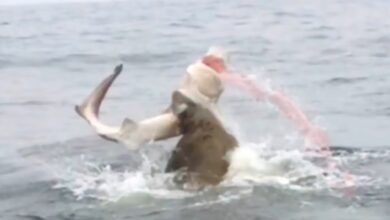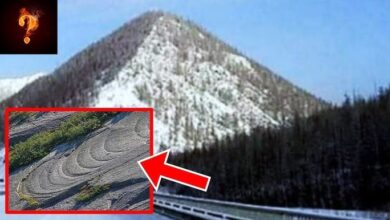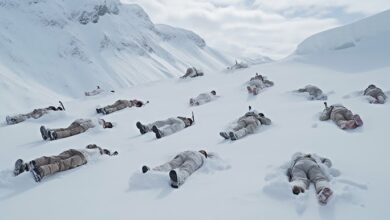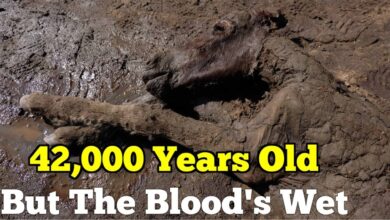New DNA Study Comparing Ötzi the Iceman To His Neighbors Reveals New Twist!

For more than three decades, Ötzi the Iceman has fascinated scientists, historians, and the public alike. Discovered in 1991 by two stunned hikers emerging from the melting ice of the Tyrolean Alps, his body—preserved for over 5,000 years—offered a breathtaking window into life during Europe’s Copper Age.
From Ötzi, we’ve learned astonishing details: his last meal of ibex, red deer, and einkorn wheat; his clothing of stitched hides and woven grass; his ailments, which included arthritis, intestinal parasites, and even Lyme disease. And then there is the brutal nature of his death—an arrow piercing his shoulder, followed by either a fatal blow to the head or, as newer research suggests, a fall from a cliff that left him helpless in the freezing alpine wilderness.
Yet, while Ötzi himself has been studied in remarkable depth, the world he inhabited—the lives, origins, and relationships of his Copper Age neighbors—has remained mysterious. What kind of society did he live in? Were those around him genetically and culturally like him? Or was this solitary traveler truly one of a kind?
A groundbreaking study of ancient DNA now offers answers. A team from the Institute for Mummy Studies in Bolzano, Italy, analyzed the genomes of 47 individuals who lived in the South Tyrolean Alps between 6,400 and 1,300 BC. Fifteen of them came from Ötzi’s own time and region, around 3,300 BC. Their goal: to place Ötzi in the genetic context of his world, among the hunters, farmers, and traders who shared his alpine homeland.
Ötzi’s story begins long before his birth. When the glaciers retreated roughly 18,000 years ago, western hunter-gatherers settled in the eastern Alps. By 7,000 BC, farmers from Anatolia brought agriculture and livestock, mixing with local hunter-gatherers. By 4,800 BC, these alpine populations carried roughly 80–90% Anatolian ancestry, a genetic signature that would remain remarkably stable for thousands of years—more similar to that of modern Sardinians than to neighboring Europeans. The Alps, once a crossroads, had become an isolated refuge, preserving a unique genetic legacy that shaped Ötzi’s world.
At first glance, Ötzi appears to fit neatly within this picture. Like most of his contemporaries, he carried around 90% Anatolian farmer ancestry and only a small trace of hunter-gatherer heritage. But a closer look at his paternal and maternal lines revealed something extraordinary.
Ötzi’s Y chromosome belonged to a rare branch of the G2a haplogroup, known as G-Z6208. This lineage had been found among early farmers in Germany, Spain, France, and Croatia but was absent among his alpine neighbors, most of whom carried a related but separate G2a branch, L497. His maternal lineage was even stranger: his mitochondrial DNA belonged to a type known as K1f—unique to him, with no matches among any ancient or modern individuals. It is as though his maternal bloodline simply vanished from history.
This raises an intriguing question: was Ötzi descended from a different group of farmers, perhaps from northern Italy or even Anatolia itself? The researchers say more data will be needed to solve this puzzle.
The DNA of Ötzi’s neighbors, however, offers insights into the society he lived in. Most men carried the same G2a-L497 paternal lineage, suggesting a patrilocal structure—where men stayed in their home villages, passing land and tradition down to their sons. By contrast, women displayed a wide variety of maternal lineages—H, J, K, U, V, X—many with rare subtypes. This diversity suggests that women came from other regions, marrying into alpine communities and bringing new genetic material with them.
There were exceptions. Two men carried unusual Y chromosomes—one linked to the Eastern Mediterranean or Caucasus, and another tied to later Bronze Age migrations—evidence that outsiders occasionally joined these isolated mountain societies.
The study also examined physical traits. Ötzi and most of his neighbors likely had brown eyes and dark hair, typical of Anatolian-descended farmers. Their skin tone ranged from pale to intermediate. None of them were lactose tolerant, indicating that milk had not yet become a dietary staple.
Ötzi’s possessions confirmed his connection to a broader world. His copper axe came from Tuscany, linking him to long-distance trade networks that also brought Baltic amber and Mediterranean obsidian into the Alps. His carefully made clothing, hunting weapons, and toolkit revealed a life shaped by both survival and skill.
Yet Ötzi stood at the end of an era. Around 2,400 BC—centuries after his death—new people carrying “steppe ancestry” from the Pontic-Caspian grasslands arrived in the Alps, bringing horses, bronze tools, and profound cultural change. Some alpine individuals from this later period also carried traces of ancestry from the Caucasus and even Neolithic Iran, evidence of far-reaching migrations. Ötzi, however, lived before all of this. He was the product of a deeply rooted, isolated alpine population—perhaps one of its last unaltered members.
His lonely, violent death only deepens the mystery. Was he killed because he was an outsider? Was it a robbery, a feud, or a ritual? His rare DNA hints at a man who stood apart, perhaps a remnant of a fading lineage, wandering the high mountains until fate struck him down.
What is clear is that Ötzi was more than just another Copper Age villager. He was a genetic outlier, a man who may have carried the legacy of a disappearing people. His story, preserved in ice for 5,000 years, is not just about one life—it is about an entire world on the brink of transformation.
And thanks to modern science, his story is far from over. As researchers extract more ancient genomes and refine their techniques, they may yet uncover where Ötzi truly came from, who his people were, and why his lonely body was left in the frozen heights.
What do you think? Was Ötzi the last of a dying lineage—or simply one man caught in the shifting tides of prehistory?








